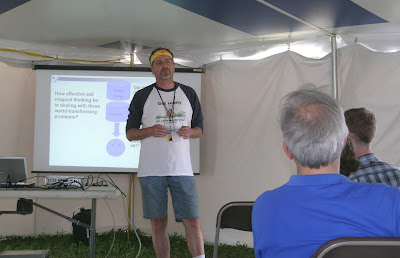From a news release issued by Madison Gas and Electric:
MADISON, Wis. - (Business Wire) Wisconsin's first large-scale wind farm began producing clean, renewable electric power 10 years ago today in Kewaunee County. The 17-turbine, 11.22-megawatt facility built and owned by Madison Gas and Electric (MGE) is located near Rosiere. Since 1999, the facility has produced over 215,000 megawatt-hours of electricity, enough power to supply 3,000 homes annually.
The facility was built in direct response to MGE customers who wanted to purchase green energy for their homes and businesses. The wind farm's generating capacity available for green energy sales was sold out in less than four months. Over the last 10 years, MGE has increased its wind energy portfolio by 12 times as strong customer support for renewable energy continues. MGE customers have one of the highest participation rates nationally in green energy programming offered by investor-owned utilities.
"We are grateful to the landowners and communities that support this project," said Lynn Hobbie, MGE senior vice president. "We also thank the customers who have made our green pricing program so successful."
"In 10 years, wind generation has completed the transition from boutique energy to a bulk power," said Michael Vickerman, executive director of RENEW Wisconsin. "Early commitments to wind power from utilities like MGE helped make that happen and were instrumental to that industry's subsequent growth and maturation."
At the time, MGE's Rosiere facility was the largest wind farm in the Eastern United States. Today the wind farm is one of nine commercial facilities in Wisconsin. Wind-generating capacity in Wisconsin totals nearly 450 megawatts.

 2:30 PM
2:30 PM
 Unknown
Unknown




